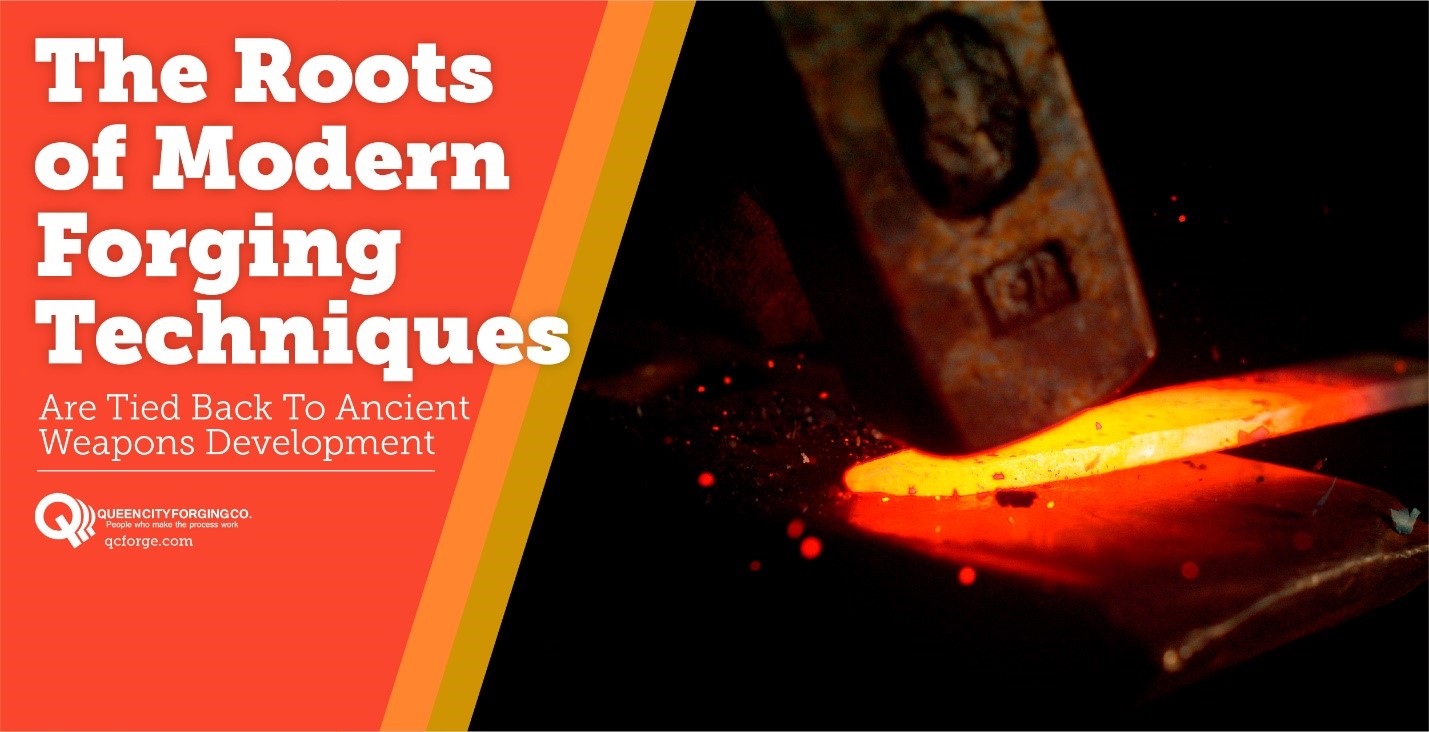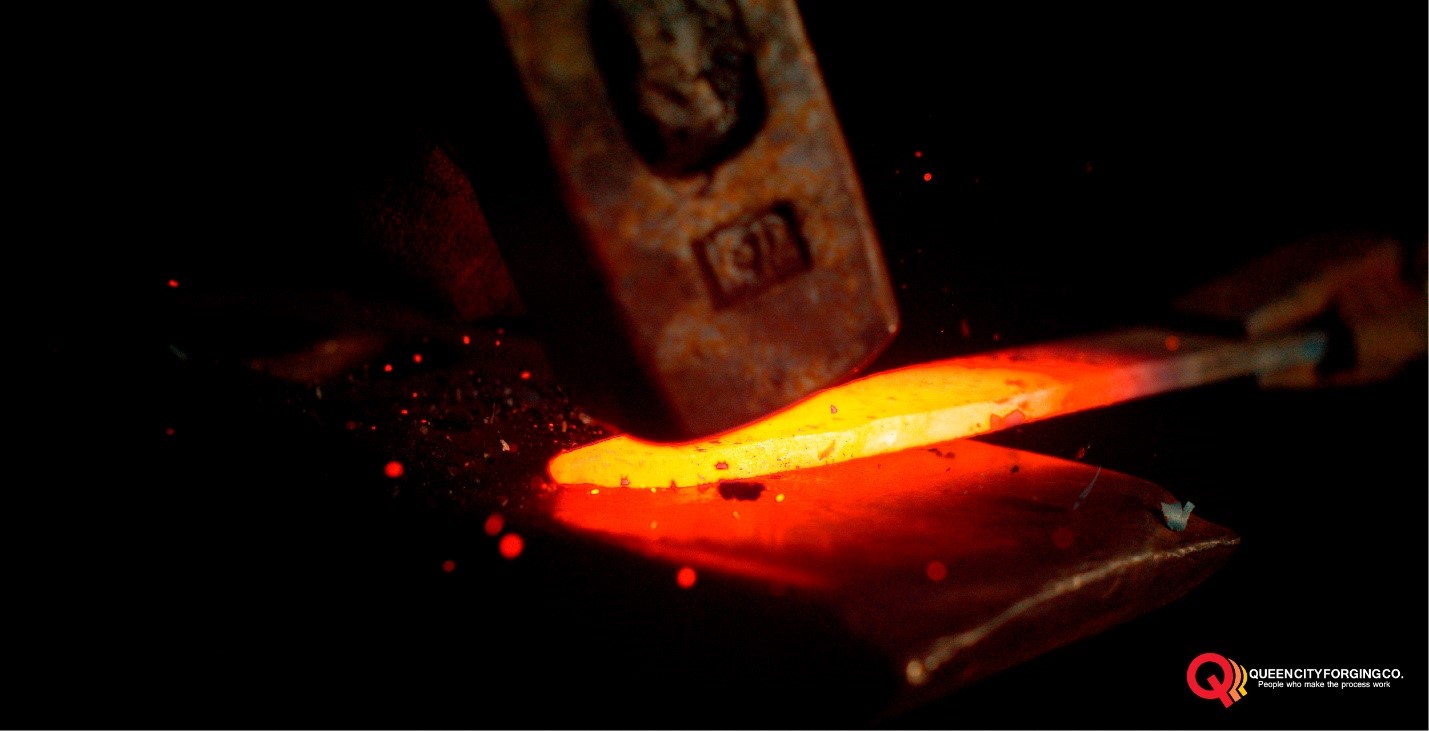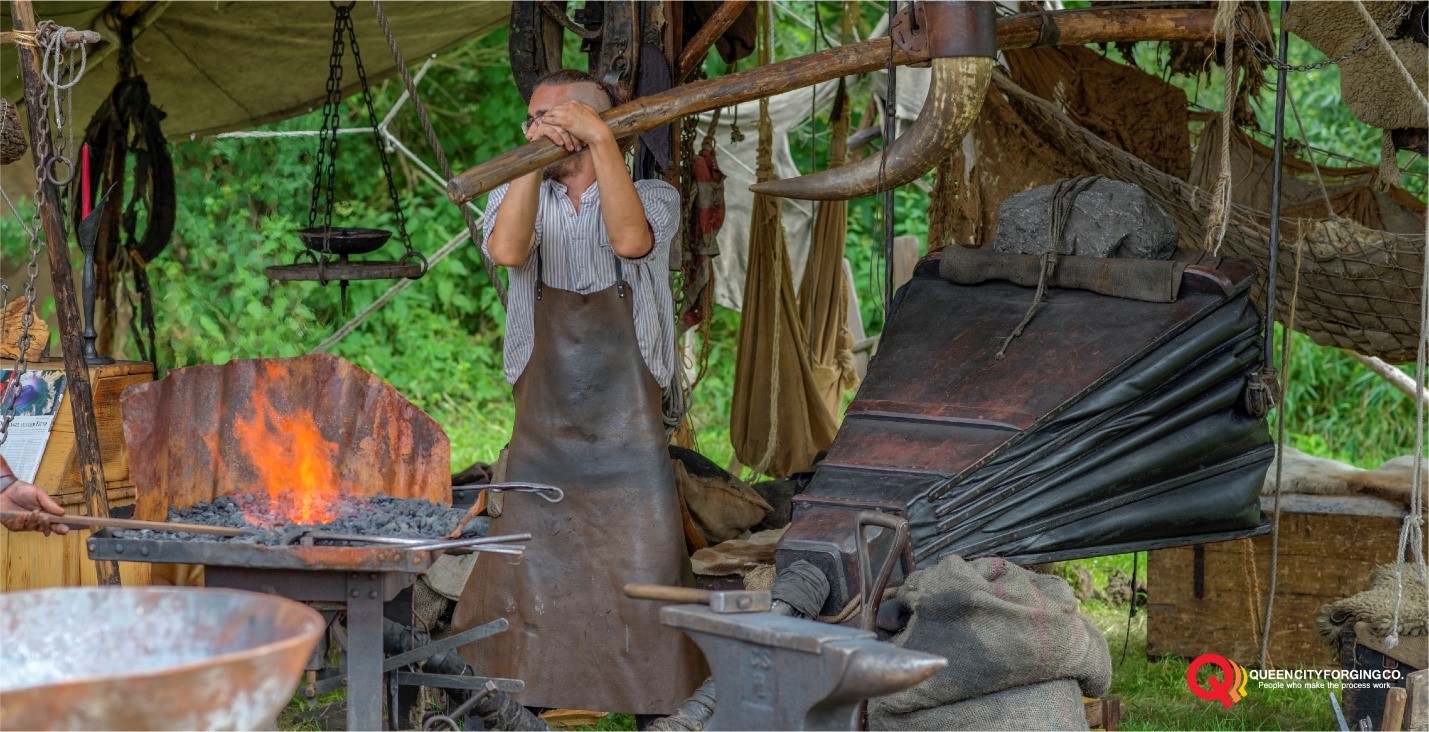Forging today is a worldwide industry where modern forging facilities produce high-quality metal parts in wide-ranging shapes, materials and finishes. Many different types of metals can be forged, including carbon steel, alloy steel, stainless steel, aluminum, brass, copper, titanium, nickel, cobalt and many others. Even matrix and complex compositional materials, some more like ceramics, may be shaped by the deformation energy of the forging process. With forging the resultant product has high strength along with other superb metallurgical properties.
At its most basic level, forging involves shaping metal pieces using heat and pressure, creating structural component parts for all variety of machinery, tools, and weapons.
What is not commonly known is that forging dates back to as early as 4,500 B.C.
Begun around 700 A.D., the forging of katana used by Samurai warriors took weeks to produce and generally involved many craftsmen with a variety of skills required to complete the process. Three types of metal were used for the blade – a low carbon steel for the core of the blade and high carbon steel and re-melted pig iron combined to form the outer skin of the blade.
The best-known part of the manufacturing process was the folding of the steel, where the swords were made by repeatedly heating, hammering, and folding the metal in a process typically known as “forge welding”, a solid-state bonding process. Folding creates multiple layers of the metals to combine the desired qualities of each into a continuous whole. The hammering and shaping dispersed and removed impurities while bonding all the layers together.
Damascus steel, originated in the middle East at least 2,000 years ago, was the type of steel used for manufacturing weapon blades, and is characterized by a watered streak appearance. They were reputed to be exceptionally hard, resistant to shattering, and capable of being honed to a sharp, resilient edge. Production of these blades also used the “forge welding” method, layering different metals and bonding them with heat and pressure to create a superior product.
Although the exact process of producing wootz, the base material for Damascus steel imported from India and Sri Lanka, is not known, it is believed that woody biomass and leaves were used as carburizing additives in the smelting process.
As with the Samurai blades, the forging process was known to be extremely work intensive requiring a high degree of skill.
While bladesmithing using ancient techniques is still actively practiced by metalsmiths worldwide, the forging industry and design engineers now rely on metallurgical science and technology to create consistent and reliable components. Understanding of materials and deformation process now goes far beyond the skills and art practiced by the craftsmen of old. Intense effort to probe the structure of materials at the atomic level has led to creation of materials allowing humankind to achieve engineering feats that only a few centuries ago would have been considered fantasy. Skill and artistry has been multiplied many times over.
Today technology allows for a more efficient process although many of the basic principals remain the same. With both skill and science behind the materials and forging process, new developments continue and discoveries in forging are yet to be made.
Filed under: Forging Materials, Forging Parts, Forging Process, Types of Forging






